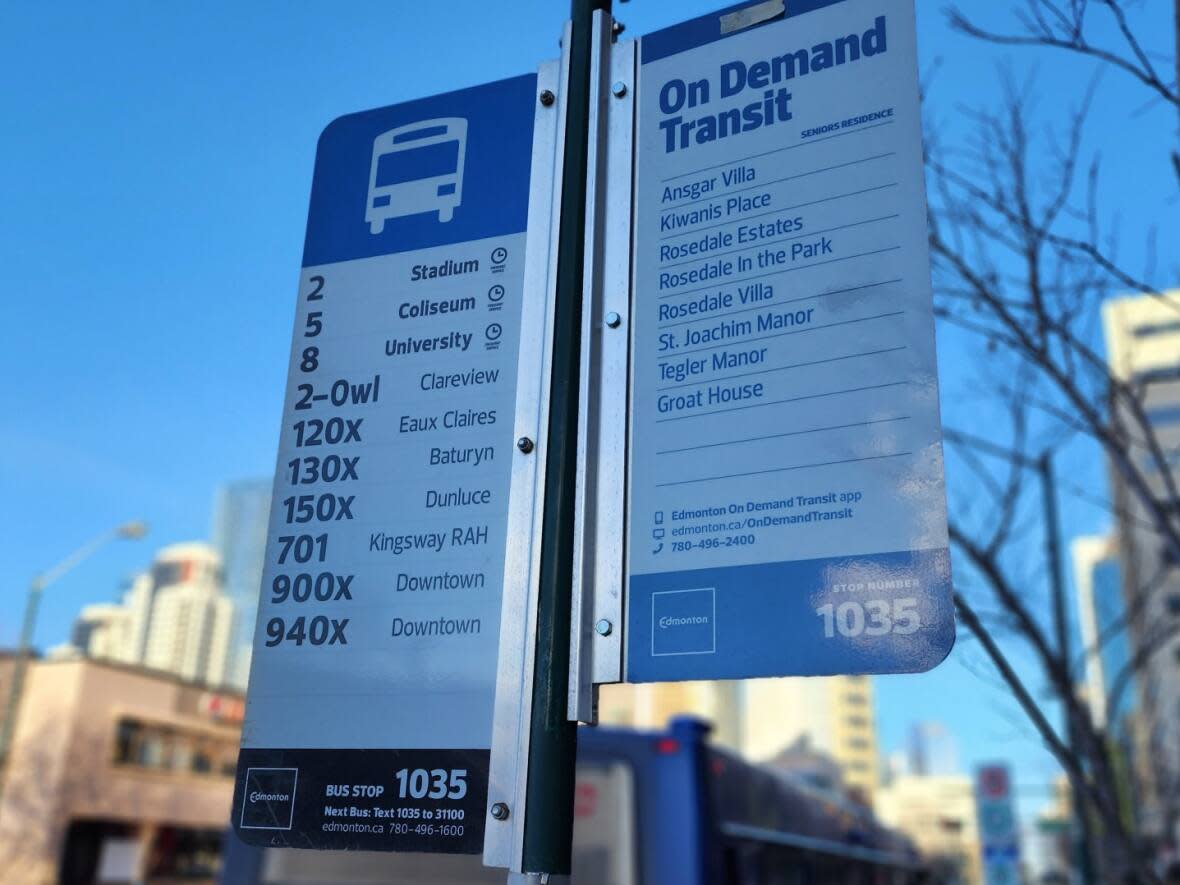On-demand transit launched in Edmonton 2 years ago. Here's how it's going

Edmonton launched its on-demand transit program about two years ago and the service is growing in popularity.
CBC Edmonton compiled data on the ridership of on-demand transit from its inception in April 2021 up to the first week of February 2023.
It shows that ridership has mostly been on an upswing since the launch.
On-demand transit users per week
In October 2022, VIA — the city's On Demand Transit app provider — presented survey findings to the Community and Public Services Committee. The voluntary survey saw 310 riders respond.
The data from the survey indicated that 96 per cent of respondents use on-demand transit for work, education, and health care.
Around 15 per cent of respondents have a long-term physical or mental impairment. Forty-seven per cent of users are between 13 and 24 years old, according to the survey. Seventy-three per cent of respondents do not have a personal car.
The survey also showed that 84 per cent of users would like to see a service expansion to avoid long wait times.
Daniel Vriend, director of planning and scheduling with Edmonton Transit, said it's fair to say that in the city's eyes, the on-demand transit program has been a success.
"Our vision is to continue to listen and learn from Edmontonians and what the needs are and to adapt to that," he said in an interview.
He said the program is frequently making changes based on feedback from people who use the service. Vriend said the city recently increased the budget for on-demand transit, and his department is looking at how and when they can expand the service.
"Like most things, there's a little bit of supply chain issues here in having some vehicles arrive, so we're working through those details now to understand exactly when we can begin to offer those new services," he said.
Like any system, especially a new one, kinks are still being worked out, Vriend said. Most of the criticism of the program is focused on wait times.
Vriend said he's heard from the community that the system needs more accessibility, particularly in off-peak hours. He said the city is adding routes during those times.
Room for improvement
Giselle General used on-demand transit every work day for more than a year. She recently moved to a new neighbourhood with other transit options so she doesn't use it as often now, but is well-versed in the system's issues.
General is also on a city board where she advises on transit, but spoke to CBC News in her capacity as a daily transit user.
She said the system works on a basic level, but there's room for improvement. The city should improve their strategy for making people aware of on-demand transit, she said.
"It's important to remind people it exists because I think a lot of people are still not aware of how it works," she told CBC in an interview.
The integration of the on-demand transit app and other trip-planning apps like Google Maps could also work, General said.
For example, she notes that when planning a trip on an app like Google Maps, on-demand transit does not appear as a route option.
"Having the option to consider the on-demand bus needs to be a bit more front and centre in these planning apps," she said.


